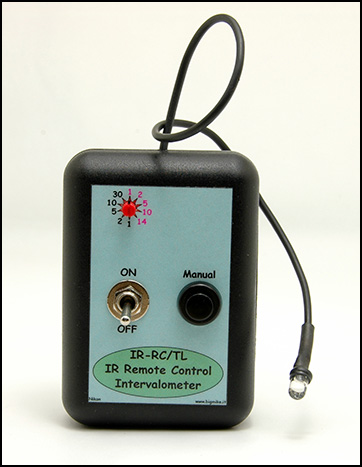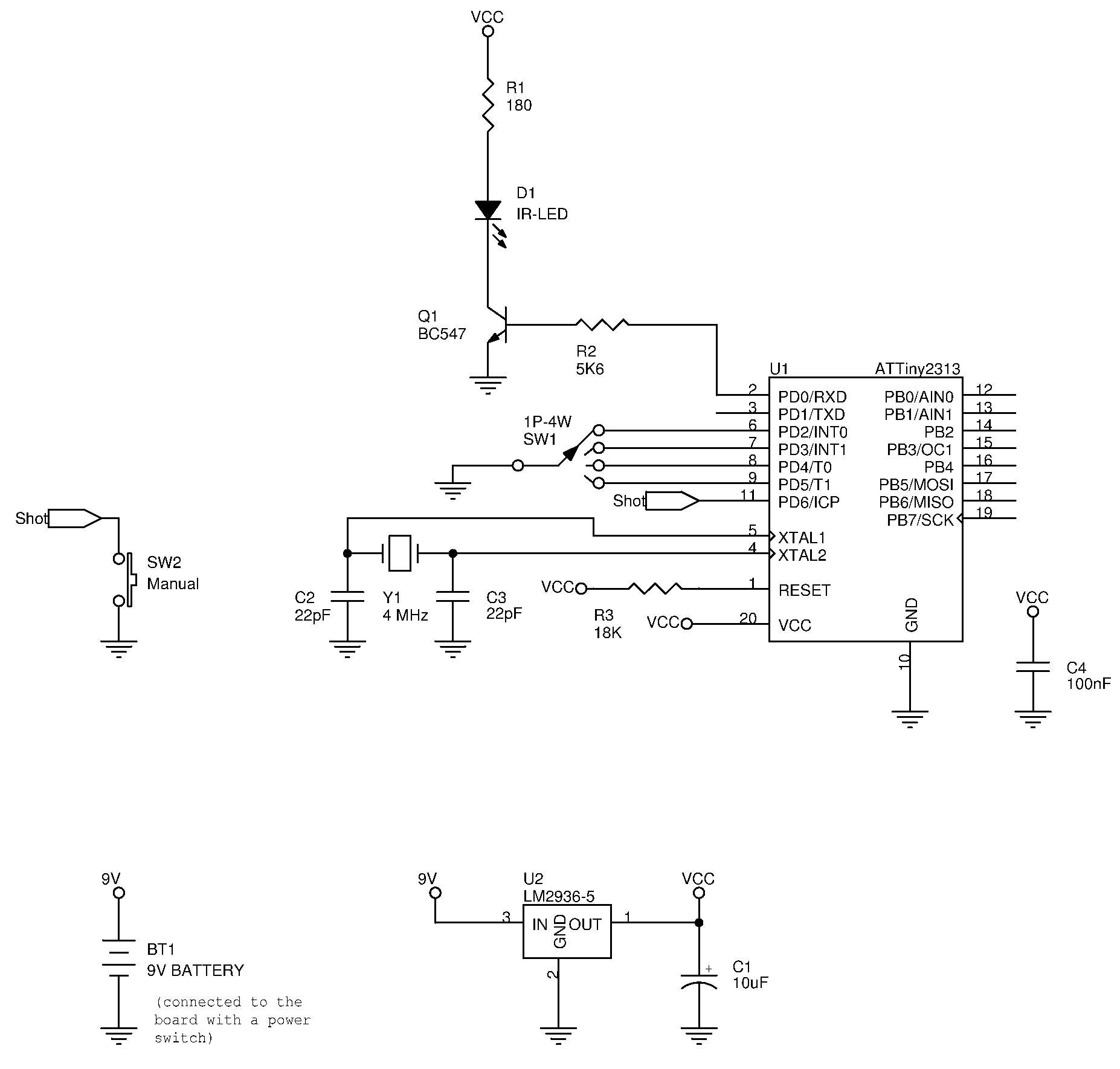IR Remote Control
Intervalometer
This project is the natural evolution of the “standard” version described in the previous page.
The idea is quite simple: we have a micro capable to trigger the camera, why not to program it to shoot a picture, automatically, at a regular intervals?
This function is often called “intervalometer” and is mostly used for time-lapse photography.
The use of an intervalometer, however, isn't limited to realizing slow-motion videos. It can be used, for example, for capturing events like lighting, an animal eating, detecting footprints (see intervalometer-detects-footprints) and whatever else you can think up.
My intention was to realize a pocket-size circuit, simple and quick to set up. For this reason you won’t find any kind of display, buttons or numeric keyboard.
The minimal requirements are: a power switch (the remote control must work “stand-alone”, no human key press will be needed), a system to change the time intervals, a manual push button (so we won't need a second manual, remote control). For the time selector I used a 10 position rotary BCD switch. It has 4 output bits that can be connected directly to the microcontroller.
The power supply needs some changes. A small CR2032 isn't enough to keep the circuit powered for many hours, so I opted for a 9V battery. An alternative choice could be 2 or 3 AAA batteries, but I was unable to fit them in the plastic box I want to use.
As mentioned previously, a similar circuit will probably be kept on for a long time (unlike a standard remote control, turned off after one shot), so is it interesting to reduce the global power consumption.
Simple changes I made from the standard version are:
- - Slower crystal clock : now 4 MHz (I haven't found 1 or 2 MHz at a reasonable price)
- - Software interrupt for timing, so is it possible to use sleep during pauses
- - Less current for the IR led. This remote control is probably always used not too far from the camera.
- -To reduce the 9 volts I used an LM3936-5 voltage regulator, but you can use a 78L05 or similar (in this case the current consumption will be about 2 milliamperes more).
A new function I introduced via software is the “manual continuous shooting” : keeping the push button pressed, the camera is triggered continuously with no pause.
The final result of my new project is shown in the figure below.

The source code or the compiled program is not available for free. If you are interested, you can buy a fully assembled and tested intervalometer:


